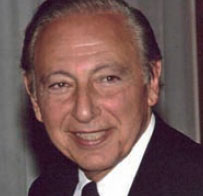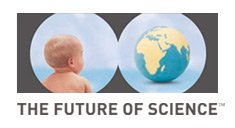Robert Gallo

Since 1996, Dr. Robert C. Gallo has been Director of the Institute of Human Virology at the University of Maryland School of Medicine. Previously (for 30 years) he was at the National Cancer Institute in Bethesda, MD. Dr. Gallo's career long interest has followed these themes: the study of the basic biology of human blood cells, their normal and abnormal growth, and the causes of abnormal growth whether excessive, e.g., leukemias or insufficient, e.g., immune deficiencies and the involvement of viruses in these abnormalities. Dr. Gallo and his co-workers opened and pioneered the field of human retrovirology when in 1980 they discovered the first human retrovirus (HTLV-1) and with others showed it was a cause of a particular form of human leukemia. (This was the first, and to date, the only known human leukemia virus and one of the few known viruses shown to cause a human cancer). A year later he and his group discovered the second known human retrovirus (HTLV-2). Dr. Gallo and his colleagues also independently discovered HIV (the 3rd known human retrovirus), and provided the first results to show that HIV was the cause of AIDS. They also developed the life saving HIV blood test (1983-1984). Earlier (1978) Gallo discovered a variant of gibbon ape leukemia virus (Hall's Island strain) which causes T-cell leukemia. The discoveries of all human retroviruses, including HIV, were to a great extent dependent on being able to grow human T-cells (lymphocytes) in the laboratory, and this was achieved by the use of a growth factor called Interleukin-2 or IL-2. Dr. Gallo and his co-workers discovered Interleukin-2 in 1976, thus setting the stage for all groups to culture human T-cells. Today IL-2 is used not only in laboratory experiments, but also in some therapies for cancer and AIDS. Gallo and co-workers also spent several years in the 1970ies working out detailed biochemical and immunological characteristics of human cellular DNA polymerases alpha, beta, and gamma as well as reverse transcriptase (RT) from several retroviruses in order to use RT as a sensitive and specific surrogate marker for retroviruses. It was particularly essential to distinguish the mitochondrial DNA polymerase (DNA pol. gamma) from RT because of their similar biochemical characteristics which ad led to many prior false claims for detecting human retroviruses. In 1995 he and his colleagues discovered the first natural (endogenous) inhibitors of HIV, namely some of the beta chemokines. This discovery helped in the later discovery of the HIV co-receptor, CCR5, and opened up entire new approaches to treatment of HIV disease. Also, Dr. Gallo, along with his colleague, D. Ablashi, discovered in 1986 the first new human herpes in more than twenty-five years, Human Herpes Virus-6 (HHV-6). This is now known to cause Roseola in infants and is a candidate for involvement in several other diseases.
Main Recognition
Dr. Gallo has been awarded 28 honorary doctorates from universities in the United States, Sweden, Italy, Israel, Peru, Germany, Belgium, Mexico, Argentina, Spain, Ireland, Jamaica and Greece. He is a member of numerous professional and honorary societies including the U.S. National Academy of Sciences, the Institute of Medicine of the U.S. National Academy of Sciences, the Royal Society of Medicine (Glasgow, Scotland), the Royal Society of Medicine (Brussels, Belgium), the Royal College of Physicians (Ireland) 2007, among several others, and a member of the National Inventors Hall of Fame. He has received numerous major scientific honors and awards. What follows is a partial list. Uniquely the most prestigious U.S. award, the Albert Lasker Prize awarded twice (1982, 1986), General Motors Cancer Research Prize 1984, American Cancer Society Medal of Honor Award (1983), Gairdner Foundation International Award (Canada) 1987, The Japan Prize of Science and Technology (1988), Paul Ehrlich and Ludwig Darmstaedter Prize (Germany)1999, Principe de Asturias Award for Technical and Scientific Research (Spain) 2000, the World Health Award from President Gorbachev in Vienna in November 2001, the first Otto Herz Memorial Award for Basic Research on Malignant Processes (Israel) 1982, Hebrew University's Rabbi Shai Shacknai Memorial Price (Israel) 1985, the Tata Memorial Centre's Birla International Award (India) 1986, the Tevere Roma International Award (Italy) 1985, the Harvard Medical School Warren Alpert Foundation Award (1998), Israel's top prize, the Dan David Award (2009), and the National Library of Medicine Paul G. Rogers Medical Science Award (2010). Dr. Gallo was the most cited scientist in the world 1980-1990, according to the Institute for Scientific Information (Science July 27, 1990, p. 358), and he was ranked third in the world for scientific impact for the period 1983-2002 (PNAS, November 15, 2005, vol102, no.46, 6569-16572). He has published close to 1,200 papers. Updated 5/2010.
Basic Science and HIV/AIDS: Perspectives from the Past and Prospects for the Future
From 25 to 26 years ago (1983-84) HIV was first isolated at the Institute Pasteur (IP) by the Montagnier group, and by our group then at the National Cancer Institute (NCI) and shown to be the cause of AIDS. Several of our isolates of HIV were grown in continuous culture making an accurate global blood test possible as well as enabling HIV genomic analysis, cellular tropism, body distribution, modes of transmission, and variability (1984-85) by contributions from both groups. Other major advances soon followed, including the beginning of effective anti-viral therapy (a first in medicine) by another NCI group by 1986, and ultimately (by 1995) the huge advances in treating HIV and preventing mother to child transmission.
The lessons from this early period center on preparedness. In this report I will argue that despite the fact that the pace of discovery between 1982-85 was perhaps the fastest in medical history from the time of inception of a new complex disease and that basic science achieved two major practical advances (the blood test and effective anti-HIV therapy), nonetheless (1) we were far from prepared for the HIV epidemic; (2) most of the individuals or groups who made the early contribution did so almost by chance; (3) society regularly forgets the lessons of past major epidemics after an absence of some 20-30 years; and (4) we need multiple centers of excellence in virology that cover the breadth of human viral pathogens.
Three great needs remain: (1) drug delivery to developing nations (although this has been greatly aided by the U.S. PEPFAR program); (2) a “cure” so as no further therapy is needed by complete viral eradication or in the absence of a cure the continued development of new approaches to therapy because therapy is life-long and consequently can lead to side effects and HIV drug resistant mutants; and (3) a successful vaccine. I will specifically describe the difficulties in HIV vaccine development but some important recent progress made at our Institute with a novel concept. To summarize: the special challenges for a successful HIV vaccine are due to HIV DNA integration, HIV variation, and its early harm to the immune system. Though easy to describe, the challenge is uniquely difficult compared to past successful vaccines. However, most if not all current and past vaccine candidates have not taken these features of HIV into account. What is needed and has been needed for over two decades are: (1) far more availability of primates and to a broader number of scientists; (2) an immune response which is sustained; (3) an immune response which is broad and results in sterilizing immunity or close to sterilizing immunity. Finally, I will describe the characteristics and progress, and remaining problems with a candidate vaccine developed at the Institute of Human Virology.





